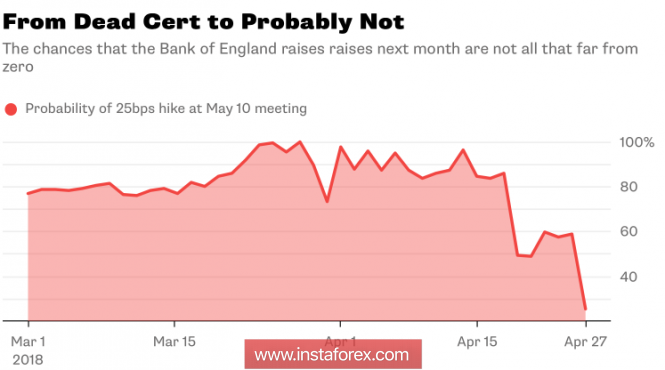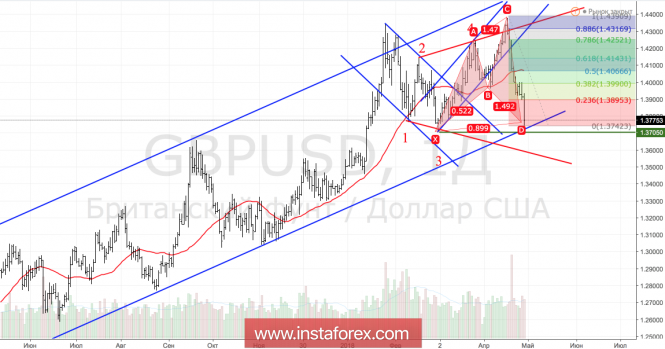The release of data on Britain's GDP for the first quarter was the last nail in the coffin for the British pound. The economy of the United Kingdom has slowed to 1.2% y / y, which is the weakest indicator since 2013. In quarterly terms, it increased by 0.1%. And although the bulls of the sterling are trying to make a good face in a bad game, stating that the worst culprit in the loss of the speed of GDP was bad weather and that the Bank of England only pays attention to the second assessment of the indicator (in October-December 2010, under the influence of similar factors, -0.6%, but then was revised to 0.1%) show evident signs of a structural slowdown.
First of all, we are talking about the loss of steam by the leading trading partner of Britain - the eurozone. Problems of exporting in the United Kingdom was created by a strong pound, which until mid-April, seriously claimed to be the best performer among the G10 currencies. And yet, the roots of the problems need to be sought in performance. If in the second half of 2017 the indicator showed the best dynamics in the last 10 years, then in 2018 its speed decreased. Against the background of further improvement of the labor market conditions, this was the first sign of a recession.
Disappointing statistics on GDP caused another blow to the "bulls" for the GBP / USD, bringing down the pair's quotes to the lowest level since early March. The chain of "dovish" rhetoric of Mark Carney, the weak data on the economy of Britain, and the reduced probability of monetary restriction BoE show that sales of sterling "continues to work. The chances of an increase in the repo rate for the month of May from 0.5% to 0.75% fell to 20%. Although, before the fiery speech of the head of the Bank of England a week ago, the data confidently kept close to 80%. Moreover, the market is increasingly believing that in November, when the regulator tightened monetary policy, they had made a mistake.
The dynamics of the probability of BoE rate increase in May

In any case, a too rapid slowing of inflation and a sluggish economy are weighty arguments in favor of having to measure seven times before cutting off. Just as the futures market was confident in the May raise of the repo rate in mid-April, by the end of the month, the market became a convinced agnostic. Is it any wonder that a 4.2% collapse of GBP / USD happened in a couple of weeks?
With the least role in this process was the strengthening of the US dollar under the influence of growth in the yield of treasury bonds. What's next? First, rates on 10-year Treasury bonds could not overcome a psychologically important 3% line in one breath, and it is not a fact that negotiations on trade between Washington and Beijing will go smoothly. Secondly, Bloomberg experts are optimistic about the upcoming releases on business activity in Britain for the month of April. These factors are able to support the "bulls" for the GBP / USD.
Technically, reaching the bottom of the ascending trading channel and targeting by 88.6% in the "Shark" pattern increases the risks of rollback in the direction of 23.6%, 38.2% and 50% of the CD wave as part of its transformation into the 5-0 pattern. On the contrary, a confident break of support at 1.37 will allow the "bears" to count on the continuation of the southern trend.
GBP / USD, daily chart

